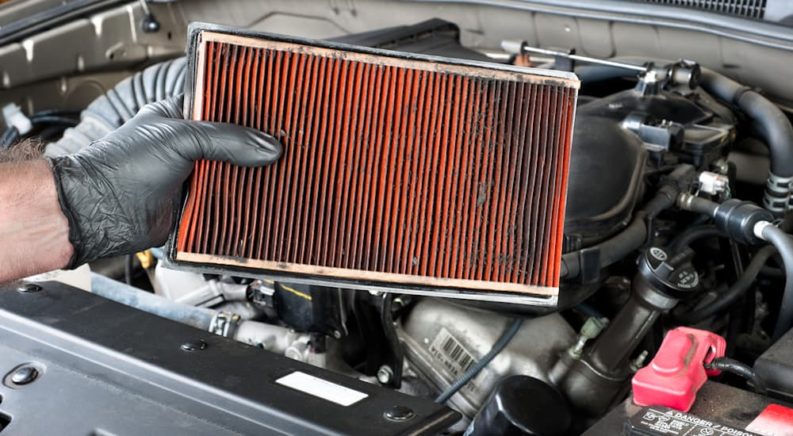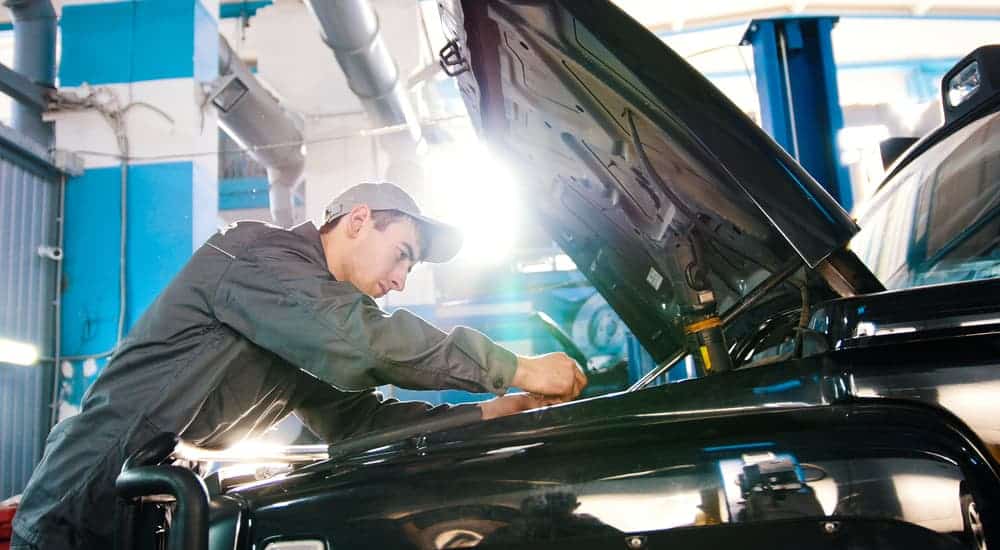Properly taking care of a vehicle is perhaps the single most important thing you can do when it comes to owning a car – aside from driving safely. And yet, for many people, car maintenance is the last thing they want to think about. I get it – after a long day of work, the idea of crawling around under your car or taking it to a shop can be the last thing you want to do. But ignoring a problem does not make it go away – it merely ensures it will come back to ruin your day later on, usually as something much worse than what you ignored.
With that in mind, here are some common things that a lot of people forget or neglect when it comes to proper car maintenance. Don’t let the word “car” fool you though, these apply to trucks and SUVs too. Some of these are simple things you should be doing yourself, often through simple routine care and maintenance. Others are more elaborate and you’ll probably want to have a professional mechanic or technician handle them for you – unless you have a really impressive home setup and a lot of experience.
#1 – Checking Your Oil Level
The first of three things you should be doing fairly regularly as a form of simple car maintenance related to your engine’s oil level is to check it. You don’t need any fancy equipment for this – just park your vehicle on a level surface and have a paper towel or old rag handy. Find the dipstick for your engine’s oil and pull it out, wipe it off with the towel, and then put it back in. Now withdraw it again and look at the oil level on the stick – it should be between a pair of lines indicating proper levels; if not, then add some oil until it is.
#2 – Checking Your Oil’s Appearance
While you are checking how much oil is in your car’s engine, you should also pay attention to what the oil on the dipstick looks like. Good motor oil is somewhat transparent, with a clean amber or brown coloration to it. You shouldn’t see impurities or dirt in the oil, and it should have a glossy, slick texture. Dirty oil needs to be replaced or changed right away to ensure your engine runs properly and avoid potential issues that can be quite costly.

#3 – Changing Your Oil
The last thing you might be forgetting or neglecting when it comes to car maintenance and your oil is to have it changed. Old rules about how often this should be done can be ignored – check the owner’s manual for your vehicle. Somewhere in there you will find the manufacturer’s recommendation regarding how often to change your oil – follow this. As long as you check your oil every few months, and it looks good, you can stick to the manufacturer’s recommendation. Consider using synthetic or a blend when getting new oil in your engine – it costs more, but it works better.
#4 – Checking Your Tire Pressure
Now that you have your oil under control, it’s time to think about your tires and make sure you remember to include them in your regular car maintenance. Start off by regularly checking the pressure in your tires. You can do this with an inexpensive gauge that makes it quite simple, or use a gauge typically located with air pumps at gas stations. Check your tire pressure regularly and make sure you inflate your tires if they are getting low – you’ll get a smoother ride from it, and it’s better for your tires.
#5 – Checking Your Tire Tread Depth
While you’re checking the pressure, you should also check the depth of the tread on your tires. That tread isn’t just there to look interesting or provide clues on police TV shows – it helps you maintain control on slippery terrain such as rain and slushy snow. Use either a penny or a quarter to check the depth of your tire tread – just insert it into the tread with the head of the President facing down. If you cannot see the top of the President’s head, then you’re still fine. As soon as his head is showing, however, then it’s time to replace your tire – you have more time to act if you use a quarter rather than a penny.
#6 – Rotating Your Tires
In a perfect world, your tires would wear evenly as you drive on them. All evidence indicates this is an imperfect world; however, so wear on your tires is not even and over time can really make a difference. When you go in for an oil change or other routine car maintenance, ask them to rotate your tires for you – assuming they’re not due for replacement. This keeps the wear on your tires more even and helps them last longer while providing a smoother ride.
#7 – Changing Your Tires
Finally, when considering your tires, be sure to have them replaced as necessary. Checking your tread depth is great, but you need to actually act on that information and replace tires that are getting worn down. The rubber in tires is quite durable, but it still breaks down over time and with regular use. So even if they look okay and have good tread, you still need to replace them as they get older.
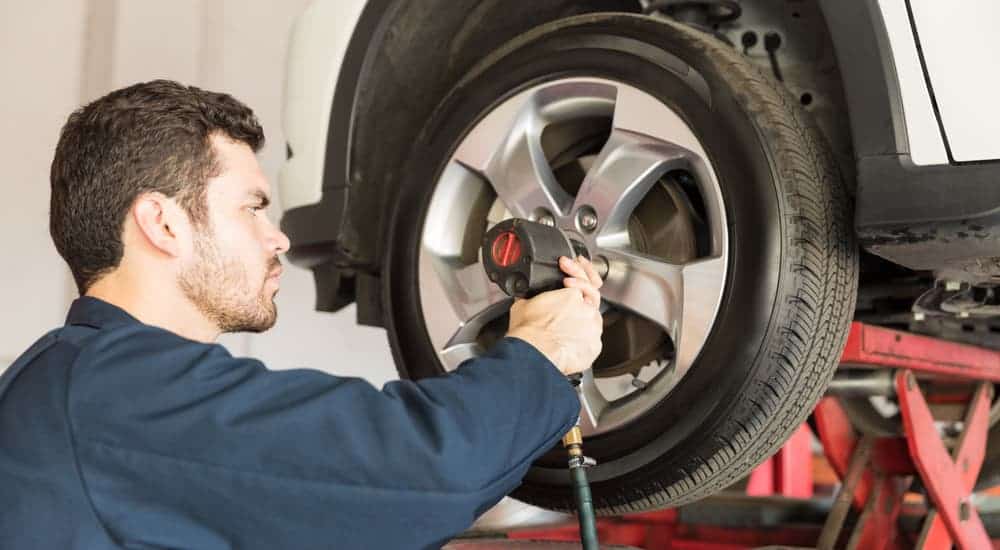
#8 – Check the Seal on Your Gas Cap
This is very easy to forget or ignore when considering routine car maintenance, but it can make your life much easier. The gasket that forms a seal on your gas cap will wear down and break over time – it’s typically just rubber, which has a limited lifespan. As it wears down, it no longer forms a tight seal, which can cause you to lose out on gas mileage and even cause your “check engine” light to come on. Do yourself a favor and remember to give your gas cap a good look every now and again – you can save a lot of time, money, and frustration by replacing a cheap cap rather than going to a mechanic for a mystery light.
#9 – Change Your Air Filter
This is one of those things that is not so much commonly forgotten as it is mistakenly ignored. A lot of mechanics will push the idea of replacing your air filter while you are in for car maintenance, which you might think is just a way to get more money out of you. In reality, however, the air filter is vitally important to keeping your engine running smoothly and avoiding potentially costly damage to it. Air filters are cheap to replace – much more so than an engine that has been damaged by dirt and debris or by lack of airflow.
#10 – Change Your Windshield Wipers
You can put this squarely in the “don’t think of it until you need it” category when it comes to car maintenance. Windshield wipers are absolutely essential for ensuring you have proper visibility while driving. Of course, the majority of the time you’re not using them so you’re probably not thinking about them. Trust me; it’s better to replace your wipers as they wear down before you’re caught in a torrential downpour, rather than in the midst of a thunderstorm.
Check them every so often when it’s not raining and replace them as needed. This is something you can easily do yourself, plus new wipers are much less expensive than your insurance rates will be after you slam into a vehicle you couldn’t see due to rain.
Be sure to check back next month for more bits of car maintenance you’re probably forgetting or letting slide!
#11 – Have Your Brakes Checked
To be fair, this is something you probably can’t do yourself, unless you have a terrific home setup or you really know what you’re doing. Sometimes the most important aspect of car maintenance is to know what you can do yourself and what you need to have someone else do for you. While you are getting other work done on your tires, it’s a great time also to ask them to check your brakes and see how they’re holding up.
Your brake pads will wear down over time through simple use – it’s not something that only comes up after a serious issue. When you’re having your tires rotated or changed, ask the licensed mechanic also to check your brakes and see how they look. If they’re getting worn down, then have them replaced. You should also have your brakes checked immediately if you notice a change when braking or sounds different or if your brake pedal feels soft or not as responsive.
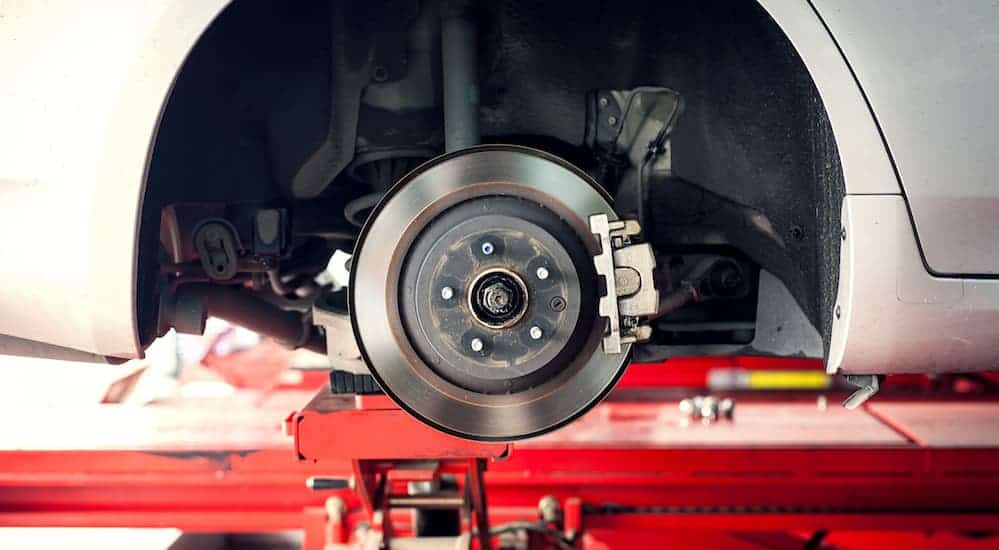
#12 – Visually Inspect Your Vehicle
This falls right into the category of “things so simple they get overlooked.” On a reasonably regular basis, take a moment to inspect your vehicle from the outside and give it a good looking over. This is probably not something you want to do when you’re in a rush to fly out the door on a Monday morning, but when you have a few minutes, and you’re going to your car, stop and look it over. Check to see how your tires look, check for any signs of damage to your vehicle, and look for issues with your lights or windows – you never know what you might have overlooked.
#13 – Keep an Eye on Your Warning Lights
I’ll be honest, this probably goes without saying, but I’m going to say it anyway: keep an eye on those warning lights on your dashboard. Better yet, when you see one light up, take it seriously. Don’t be that person who has the “Check Engine” light come on and then keeps driving around like normal for three weeks.
Those lights come on for a reason, and it can be pretty serious. Even a minor issue should be handled right away so that it does not become a much larger, and more expensive, problem. If you’re not sure what a light means when it comes on, then check your owner’s manual for information about what the light means and how to properly respond.
#14 – Check Your Drive Belts
You likely have two different belts in your vehicle: the serpentine belt and the timing belt. Make sure you know where both of these are and check on them regularly to see that they are in good condition. These belts are very important for the proper functioning of your vehicle, but they are made of rubber that will wear down naturally over time. You can check your vehicle’s owner’s manual for timing on how often you should replace them, but proper car maintenance includes visually inspecting them from time to time to look for any wear or damage that could become a serious issue.
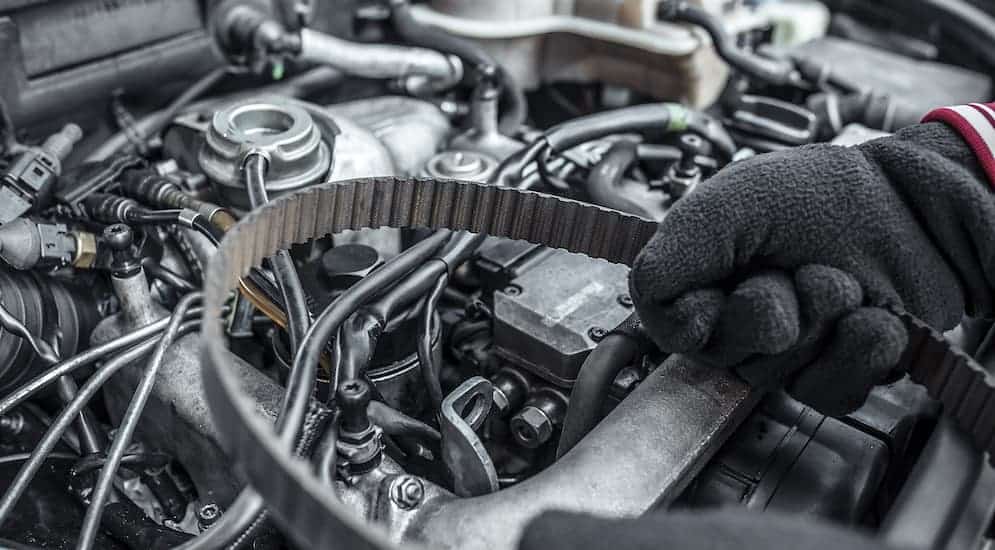
#15 – Check Your Coolant Levels
The radiator is in your vehicle to help keep the engine cool because the regular operation of your vehicle’s engine generates a lot of heat. When your radiator gets low on coolant, then your engine is more likely to overheat, and that can create all sorts of problems. Check the levels of your coolant during routine car maintenance and add more coolant when needed to keep your radiator working well. If you notice the levels are frequently low, then you might have a crack or other damage that is causing coolant to leak out of your vehicle.
#16 – Keep an Eye on Your Fuel Economy
When you bought your vehicle, you were probably told how many miles to the gallon it is estimated to get. While this is an estimate, it still gives you a pretty good idea of what to expect. More importantly, keep track of your gas mileage for the first few months you have a vehicle and make a note of what it typically gets. If you notice that you are not getting the kind of fuel economy you were before, that could indicate an issue that you need to have checked out and fixed. Not only will this save you money, but it could help prevent a much larger problem.
#17 – Replace Your Spark Plugs
Check your vehicle’s owner’s manual and know what type of spark plugs you have to determine how often you should replace them. Spark plugs are relatively inexpensive and easy for you to replace yourself during other car maintenance with only very basic tools – but they are vitally important to the proper operation of your vehicle. If your vehicle is idling roughly or misfiring, then that can mean it’s time to replace them.
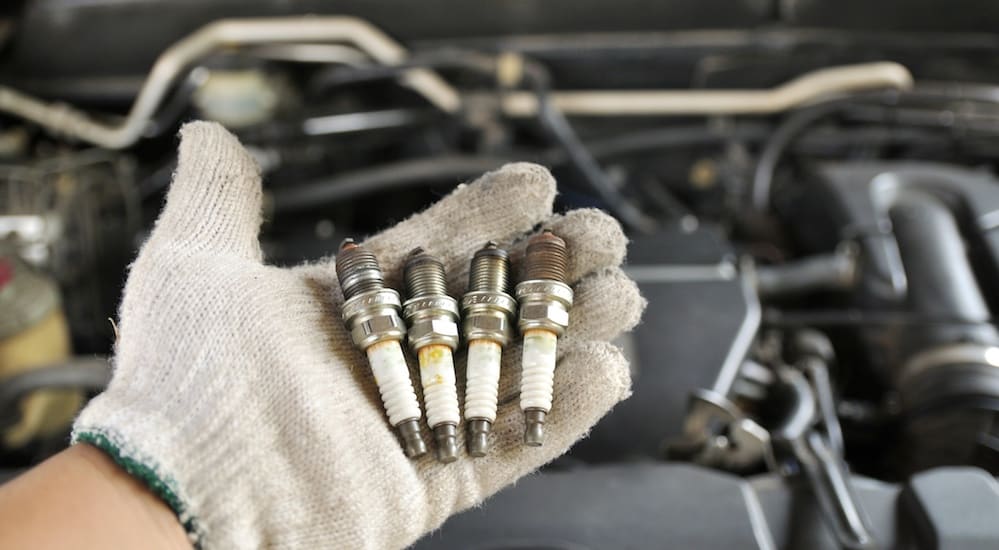
#18 – Check Your Battery Connections
Even if your battery seems fine, it’s a good idea to occasionally pop your hood and check the terminals where the cables connect to it or during other routine car maintenance. These can become corroded or have mineral buildup on them that you can easily clean off with an inexpensive cleaning brush. Not only will this help improve your vehicle’s performance, but it can avoid larger issues with your battery and the connection terminals for it.
#19 – Check Your Vehicle’s Lights
Every so often, take a moment in the evening to turn on your car, turn your lights on, and then inspect them from the outside, walking around your vehicle. Make sure they are all working properly and well illuminated. Check your turn signals and other indicators while you are at it, especially your brake lights.
If any of your lights are not working, then have them replaced immediately. Not only is this a safety issue, because other drivers need to know what you’re doing, but this a type of car maintenance that can also help you avoid an expensive ticket from a police officer.
#20 – Replace Your Cabin Air Filter
There’s an air filter for your engine (we talked about that earlier), but there’s also an air filter for your cabin. This filters out dust, pollen, and other particulates for you and your passengers riding inside the vehicle. Just like any other air filter, this will get clogged up and dirty with the stuff it blocks out for you. Make sure you check it fairly regularly and replace it, or have it replaced, during other routine car maintenance to make sure the air you breathe is as clean as possible.
#21 – Check Your Wiper Fluid
I know the title of this article said 20 things, but here’s a freebie: check your wiper fluid regularly. Whether you use it to wash dust or pollen off of your windshield, to help clear away ice, or simply to shoo away an insect, you want to make sure your wiper fluid is there when you need it. It is easy to check and inexpensive to replace, so take a moment every so often to see where you’re at with it. Trust me; you’ll be glad you did.
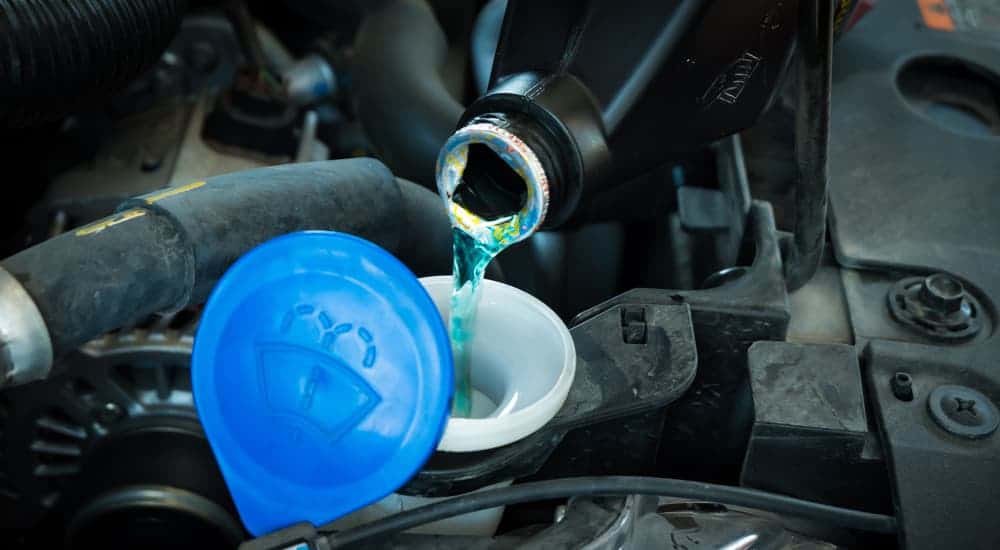
Ways to Manage Vehicle Maintenance
When it comes to properly caring for your vehicle, there are many options available for having it serviced. In fact, these days, car maintenance locations can be found all over the place. However, each location will have its own unique list of reasons for taking your vehicle there or elsewhere. You may already have a good relationship with some local mechanics, or maybe you’ve taken your car to the dealership before and have had a good experience. Actually, you may have even bought your car from the dealership, so you already know some of the employees there. Or, you could just be a pretty handy mechanic yourself and don’t mind getting under the hood to see what’s what.
Whether you’re your own mechanic, you have a local mechanic, or you take your vehicle to the dealership, there are plenty of pros and cons with each option. Let’s check them out.
Do it Yourself Service
Everyone has that friend that knows a thing or two about cars. They’ve changed your brake pads out before, or maybe they’ve checked out that funny noise that just started up out of nowhere. Maybe you’re that friend. If so, you have skills that a lot of people are missing out on these days. As the workforce moves in one direction, people, in general, have begun to lose an appreciation for being able to fix things themselves. But not you. You’re as stalwart as ever, but it may not be your actual job, and you can’t always find the time to help everyone else, let alone service your own vehicle(s).
Here are some pros of servicing and taking care of your own vehicle:
- If you’re experienced in auto mechanics and repair, you’ll know your way around your own vehicle better than most, especially if you’ve had it for a while, or there’s a certain make or model that’s been popular with you or in your family.
- If you’re not experienced in fixing cars but have the aptitude to do so, you’ll pick up a lot of useful skills and habits by forcing yourself to gain some experience. This experience will be useful for the rest of your life and will surely come to benefit others as well, including family members and friends. If you’re so inclined, you could also teach others what you’ve learned yourself and start a positive cycle of the knowledge of proper car maintenance and repair.
- If you do your own car maintenance, then you always know exactly what’s been done on your vehicle. This can include a lot of simple things like checking your fluids, checking your oil, checking your tire pressure and tread depth, checking your battery, and many other things. This can also include more advanced (or time-consuming) acts of labor, such as rotating your tires, changing your tires, changing your brakes, replacing sensors, and more.
- You can possibly save a lot of money on labor by performing your own car maintenance. This could range from dozens to hundreds or even thousands of dollars, depending on the type of maintenance or repair being performed.
- You can possibly save a lot of money on parts by ordering your own parts instead of using parts from a mechanic or dealership. However, do be careful about ordering cheaply made parts as that may just be counterproductive and in the end, won’t really save you any money (it might cost you more money after everything is said and done).
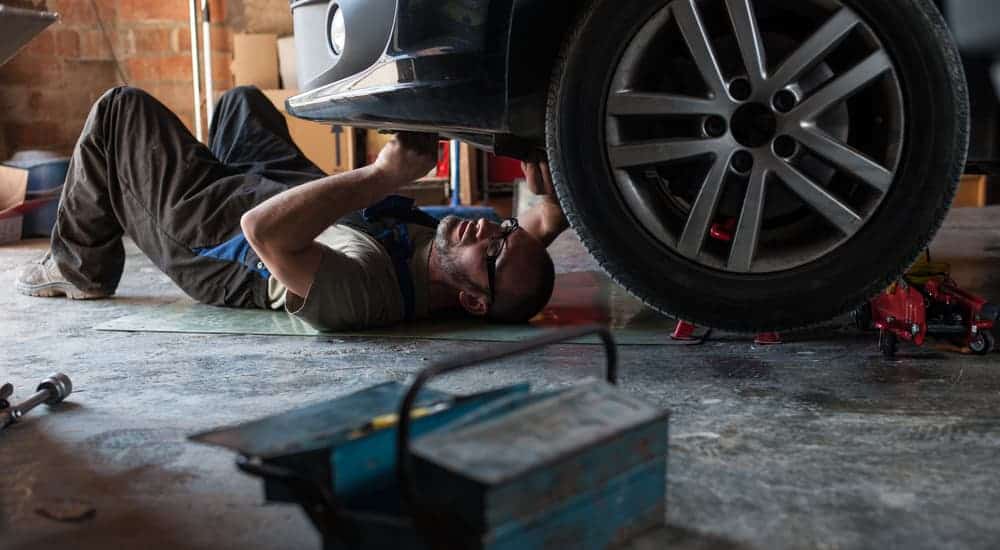
Here are some cons of servicing and taking care of your own vehicle:
- Time. This may be the biggest con because no matter what, servicing your vehicle is going to take time and, sometimes, it’s going to be a lot of it. So, it’s really up to each person to gauge whether or not it’s worth it for them to take the time to work on their own vehicle or take it somewhere else. Yes, it can be expensive to take your vehicle into a garage or dealership, but just remember that your time is also valuable. If you’re taking time off from your own work to service your vehicle, then that’s potential money you aren’t earning yourself. Also, time away from being with family and friends is something to consider, unless, of course, you’re using the time as quality time with a loved one, and you’re teaching them a valuable skill.
- You may be pretty handy or quite intelligent, but at the end of the day, there are people who do this for a living. If you don’t do this for a living, then the odds are they will be more experienced than you. Having a mechanic work on your vehicle could well be worth the price. Also, if something goes wrong with the repair, then it would clearly be the fault of whoever repaired it. Which, if you repaired it, then you may have just compounded the issue, and now you’re looking at spending more time on it yourself or possibly paying more to a mechanic than you would’ve had to do in the first place.
Local Town Garage
Everyone seems to know a friend or family member that is pretty handy with cars, but there’s also that local town guy or gal who has always been dependable when you need something done. Your local town garage can be a real asset for any town or city because, in general, people will know and trust them.
Here are some pros of taking your vehicle into the local mechanic:
- Your local mechanic is usually well-known, which means they can be trusted. This is probably the biggest issue when it comes to someone deciding whether to bring their car into a mechanic or not. Can they be trusted? Nobody likes to be price gouged, especially on machines that need such hefty repairs every now and then. Luckily, local mechanics thrive off of good service. They aren’t part of a big chain of repair shops, so they have to do their best to continue to have customers. Also, they might even know a lot of their customers outside of work, which makes good service even more important.
- They’re experienced. Sometimes your local mechanic will have a specialty, like American or German vehicles, but a lot of the time they’ll be versed in just about everything because they’ve had years of experience working on everything that’s come through their doors. If they haven’t worked on something before, they’ll either figure it out or give you their best recommendation.
Here are some cons of taking your vehicle into the local mechanic:
- There may not be any other option. If you’re in an area where there aren’t a lot of people around, well, you might only have one mechanic there. Now, this would only be a con if it turns out the mechanic isn’t very good, the prices are high, or people just don’t get along with him/her.
- They may not be able to work on your type of vehicle if they only do certain vehicles.
- They may not have parts in stock because they’re a small business.
- There may not be a lot of availability to work on your vehicle if it’s a small shop, and there are only a few mechanics.
Your Local Dealership
It’s common knowledge that most dealerships will also offer to service vehicles in their aptly named, “Service Center.” It’s easy, there are plenty of mechanics, and you may have already dealt with their employees if you purchased a vehicle there before.
Here are some pros of taking your vehicle into the local dealership:
- If your vehicle make matches the vehicles the dealership sells, then you can be sure their mechanics know their way around your vehicle. You can also be sure they’ll have any parts needed.
- They usually employ a lot of mechanics, so the work is done quite quickly and thoroughly.
- They’re usually quite professional.
Here are some cons of taking your vehicle into the local dealership:
- This is usually the place that costs the most when it comes to services and repairs.
- The experience might not be quite as personal since they deal with so many people every day.
As you can see, there are plenty of things to weigh when you are deciding what to do for car maintenance. No matter which you choose, make sure you are checking your vehicle on a regular basis for any routine maintenance it might need. Keep an eye on your mileage, the wear on your tires, and your vehicle’s various fluids, so that you can keep your vehicle on the road for as long as possible.
Don’t Ignore the Warning Signs
One of the most dreaded and irritating things that come from vehicle ownership is the inevitable vehicle maintenance. Vehicles are amazing machines that are extraordinarily complex, and will from time to time require regular work. Cars are composed of a massive amount of small moving parts; over time, these parts will wear down with constant use. While it can seem tedious and overwhelming at times, regular maintenance is something that should never be ignored. Something that is small and minor now could turn into a costly car maintenance disaster down the line. Like healthcare, things that are dire and costly can usually be avoided with some preventative care. By taking care of your vehicle in the present, you can prevent it from catastrophically breaking down in the future.
Engine Oil
Any car owner should know that the most common thing they will find themselves doing with their vehicle is an oil change. Traditionally, the rule has been every 3,000 miles (unless you are using synthetic oil), but has anyone really questioned why? A car’s engine relies on engine oil to not only lubricate the moving gears and rods inside of the engine but also to help regulate the engine’s internal temperature. If the engine becomes too hot, it would overheat and be rendered useless.
The engine oil helps to carry some of this heat away and evenly distributes it. Oil that is old and polluted becomes gradually less effective at removing heat, which is why one of the first signs that your engine oil needs to be immediately replaced is the engine will begin to overheat in certain places. This can become very problematic, as the increased heat runs the risk of warping the interior engine components. This heat is further increased by the increase in friction from the lack of lubrication. If left alone for long enough, the entire engine can shut down, and will need to be completely replaced. This can cost well north of $1,000, so it would be in anyone’s best interest to avoid having to replace your engine if at all possible.
Check Engine Light
A check engine light can be a bit trickier to handle, as it will not explicitly tell you what is wrong unless you happen to have an OBDII scanner on hand. The vehicle is controlled by a computer, which keeps track of a lot of different settings and components via electronic sensors. When the computer system detects an issue, it will record it and set off the check engine light, which lets the owner know that there is an internal issue that will need to be examined.
The problem is however that the car’s computer tracks a lot of different information, which can vary drastically in severity. The check engine light does not make much distinction however, and will get set off regardless of the severity. For instance, an O2 sensor will not make any sort of noticeable difference in the way your car drives and handles, whereas an exhaust leak will make your engine have to work a lot harder to produce power.
While only the exhaust leak has a direct and drastic impact on how your vehicle drives, both issues will cause your vehicle’s check engine light to come on. This can be quite frustrating for the common vehicle owner who does not have access to a scanner tool, as it can be difficult to determine if the repair is immediately required. However, a good rule of thumb is just to treat every check engine light the same. Even if it is only a small sensor malfunctioning, that sensor is there for a legitimate reason. It could be monitoring for something much more significant, but if the sensor malfunctions, you would have no idea the status of what it was monitoring.
The sensor itself may not prevent your car from functioning, but the component its monitoring might, so you should always have that sensor functional. It could help you save a lot of money in the long run.

